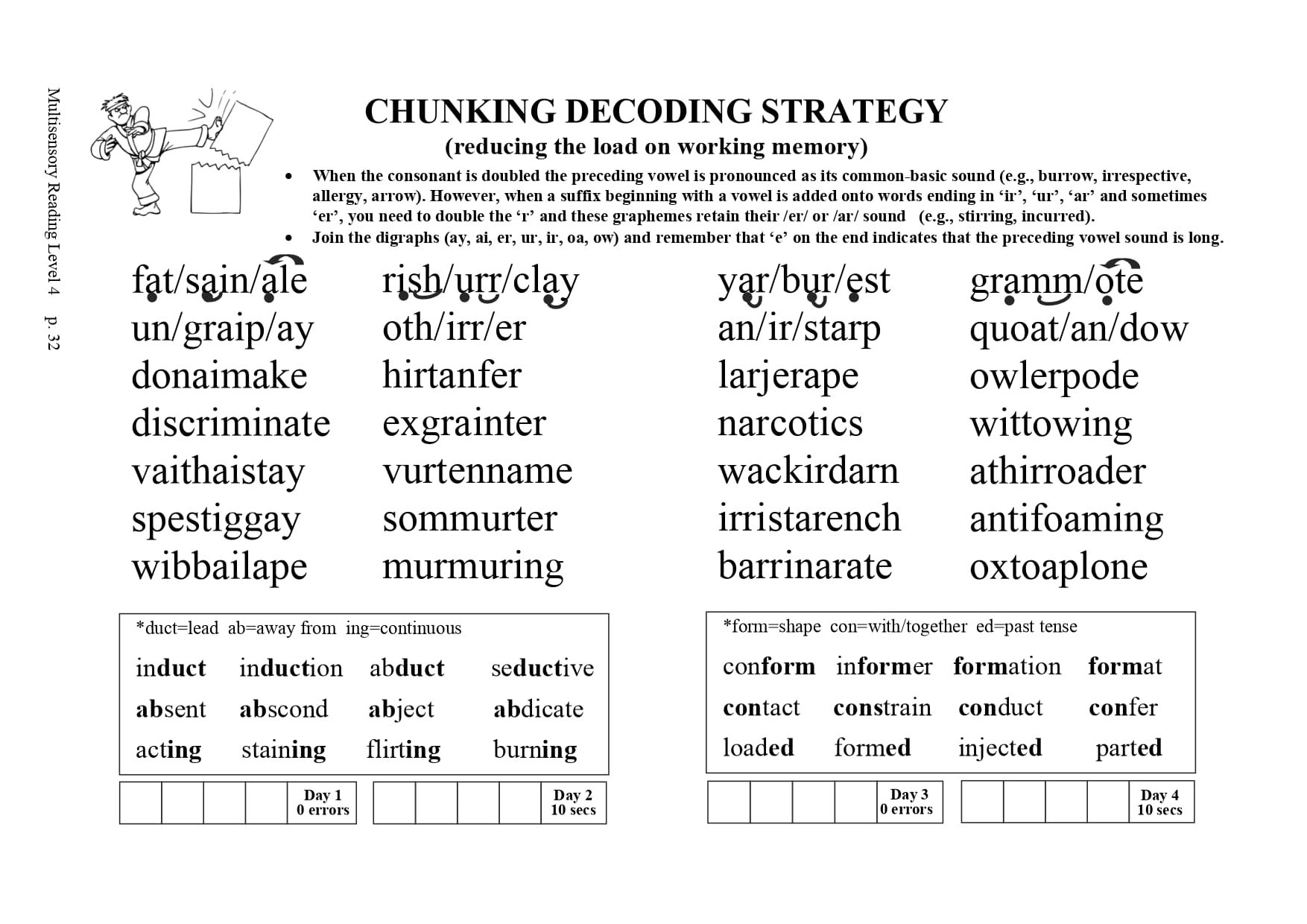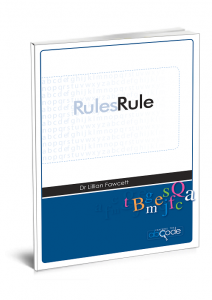Sample of the Chunking section: Multisensory Reading Program Level 4.
- The ability to quickly and accurately syllabify words is an important component of reading mastery. However, traditional rules for syllabifying words can be complex. The chunking exercises in this program use a simplified method of breaking works into manageable chunks, thereby reducing the load on working memory. It is easily learned and can be effectively applied to the decoding of unknown words. Although the system is not 100% perfect due to the complexity of English, it provides a close enough representation that the student is easily able to decipher the correct pronunciation if the word is in his/her oral vocabulary (e.g., rem/ed/y versus rem/e/dy).
- Using nonsense words prevents the student guessing, compelling him/her to practise the skill of rapidly breaking words into manageable chunks and recognising graphemes (see Diliberto et al., 2009). As a result, the student is better able to rapidly and accurately decode unfamiliar words. This exercise is also useful for developing working memory. In contrast, if real words are used, students tend to rely on their visual memory of the total word rather than the smaller components within the word. As each word is unique, no transference to unknown words is possible.
- Each nonsense word is composed of the graphemes being learned plus graphemes from previous units. This constant exposure to the graphemes in different contexts further reinforces the learning and retention of sound-symbol relationships.
- As students become more competent in the process, they can be encouraged to mentally break the words into the chunks and combine them into a smoothly read word.
Morpheme Application
- At the bottom of the Chunking exercise is an activity which requires students to apply the root words, prefixes and suffixes being learned in the General Knowledge section.

Click on the book image to purchase.
Reading Accuracy Age: Before: 8 years 6 months After: 11 years 3 monthsDarryn: 24 years 4 months
Reading Comprehension Age: Before: 9 years 8 months After: 11 years 11 months
Spelling Age: Before: 8 years 2 months After: 9 years
Known graphemes: Before:9 After: 61
Number of lessons: 12
If you have any questions or need assistance, please send Lillian a message.







